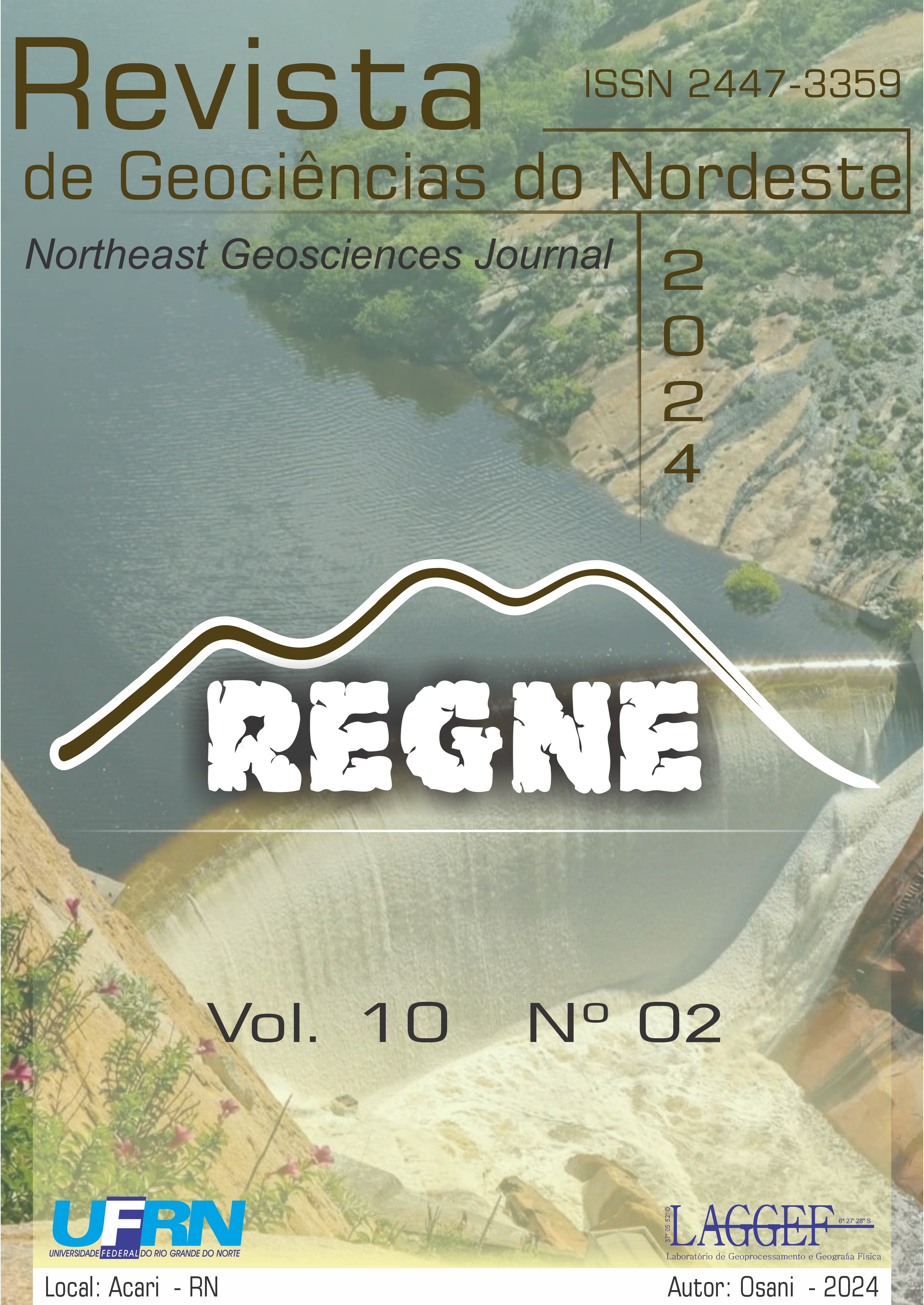Estimation of water recharge using the water table fluctuation method in an alluvial aquifer in the brazilian semi-arid region
Estimation of water recharge using the water table fluctuation method in an alluvial aquifer in the brazilian semi-arid region
DOI:
https://doi.org/10.21680/2447-3359.2024v10n2ID36338Abstract
The Brazilian semi-arid region experiences low precipitation rates and high evapotranspiration rates, making it difficult to store surface water resources. Given this reality, the population seeks alternative ways to use and store water, often resorting to groundwater stored in alluvial aquifers, especially in riverside and rural communities. In this context, this study aims to understand the phenomenon of groundwater recharge in an alluvium in a Brazilian semi-arid region using the Water Table Fluctuation (WTF) method. Additionally, it aims to analyze the influence of constructing a subsurface dam on water recharge. From September 2020 to September 2023, four wells in the alluvium of the Upper Capibaribe River, in the municipality of Santa Cruz do Capibaribe, a semi-arid region of Pernambuco, were monitored both by installed level sensors and manually. Precipitation during this monitored period was above the historical average from 1987 to 2023, which has an average monthly precipitation of 37.70 mm. The average water recharge in the wells was 27.40%, ranging from 15.71% to 32.82%. Greater stability was observed in the well closest to the subsurface dam; however, a larger data series is needed to confirm this trend.
Downloads
Downloads
Published
How to Cite
Issue
Section
License
Copyright (c) 2024 Notheast Geoscience Journal

This work is licensed under a Creative Commons Attribution 4.0 International License.


 Português (Brasil)
Português (Brasil) English
English







